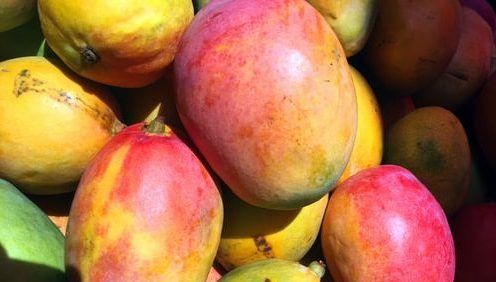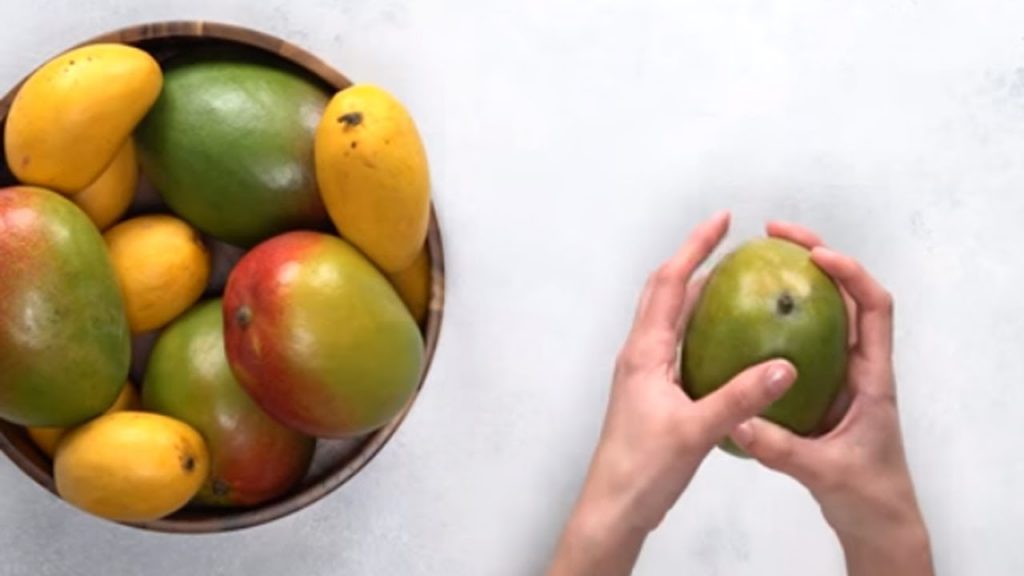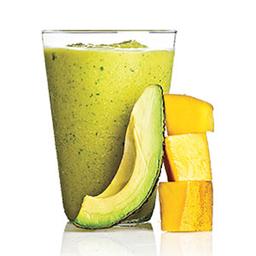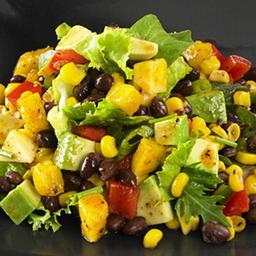
My younger daughter’s very favorite fruit is mango. Emphasis on FAVORITE! She loves all fruit, but the mango is a clear winner. Mangoes are a stone fruit with a large seed. In fact, they are part of the cashew family (yup, cashews are a fruit!) The mango is the national fruit of three different countries, India, The Philippines and Pakistan. In the United States mangoes are still considered exotic but are skyrocketing in popularity and availability.
We are definitely mango lovers in our house! I often use a couple of mango slices to make this easy Avocado and Mango Topper. It goes great with everything— a salsa for fish, a topping for a sandwich and a dip for chips. Mango in salads, smoothies, grilled and fresh off the seed are all ways we enjoy this tasty treat.
Good thing we all love mango because this “super fruit” offers over 20 different vitamins and minerals and is particularly high in vitamin C. Also high in folate, fiber and vitamins A and B6, mangoes bolster our immune health at only 70 calories per 3/4 cup serving. Yummy, win-win!
Sweet fact: Mangoes have been cultivated for over 4000 years! And the oldest known mango tree is 300 years old and is still producing fruit. Grown in tropical climates, mangoes are an important crop in South America, Hawaii, Central America, Asia, the Caribbean, and Africa. While there are over 1000 varieties, only six are found in grocery stores in the United States; Ataulfo, Haden, Frances, Tommy Atkins, Kent and Keitt. The Tommy Atkins, with a blush red color on the cheek of the fruit, is most widely available. 
In India, mangoes are part history, culture, mythology and religion. They represented faith and prosperity amongst early Buddhists. They were exchanged as gifts and became an important tool of diplomacy. During this period, Buddhist monks took mangoes with them wherever they went, popularizing the fruit.
- Legend says that Buddha meditated under the cool shade of a mango tree.
- The mango is a symbol of love in India.
- The paisley pattern, developed in India, is based on the shape of a mango.
- Giving a basket of mangoes is a gesture of friendship in India.
Choose your mango:
- The color of the mango doesn’t necessarily indicate ripeness. Not all mangos have the red color that some varieties may have.
- To determine ripeness, gently press the mango. The fruit should give and feel a little bit soft.
- Ripe mangoes smell sweet at the stem ends.
- Mangoes can continue to ripen, so don’t worry if they are still hard when you buy them.
Cut your mango:
- Note the shape of the mango. Two sides are wider than the others. These are called the cheeks.

- Hold mango straight up and find the stem center.
- Cut down just wider than the stem to cut off the cheeks. If you hit the nut, move further away from the stem.
- Cut off both cheeks and sides around the pit.
- To easily create cubes, slice in a grid pattern in the cheeks, but not through the skin.
- Invert the skin and scrape off the cubes of tasty mango.
- Check out this easy to follow video for more tips and tricks.
Enjoy Mango:
- Indians and Pakistanis squeeze a ripe mango until very soft. They puncture the top and suck the mango out. Sticky but refreshing!
- Store at room temperature until fully ripe and then store in refrigerator.
- Freeze mangos whole or already cut. Frozen mango is best used in smoothies and other purees.
- Mangos are typically peeled before consuming. For some people, the skin can cause an allergic reaction similar to poison ivy.
Mighty good mango recipes!
Search for more delightful recipes in your DinnerTime Recipe Box.
Use the filter function (found on right of your DinnerTime Recipe Box search) to find desserts, main dish, side dishes etc.



